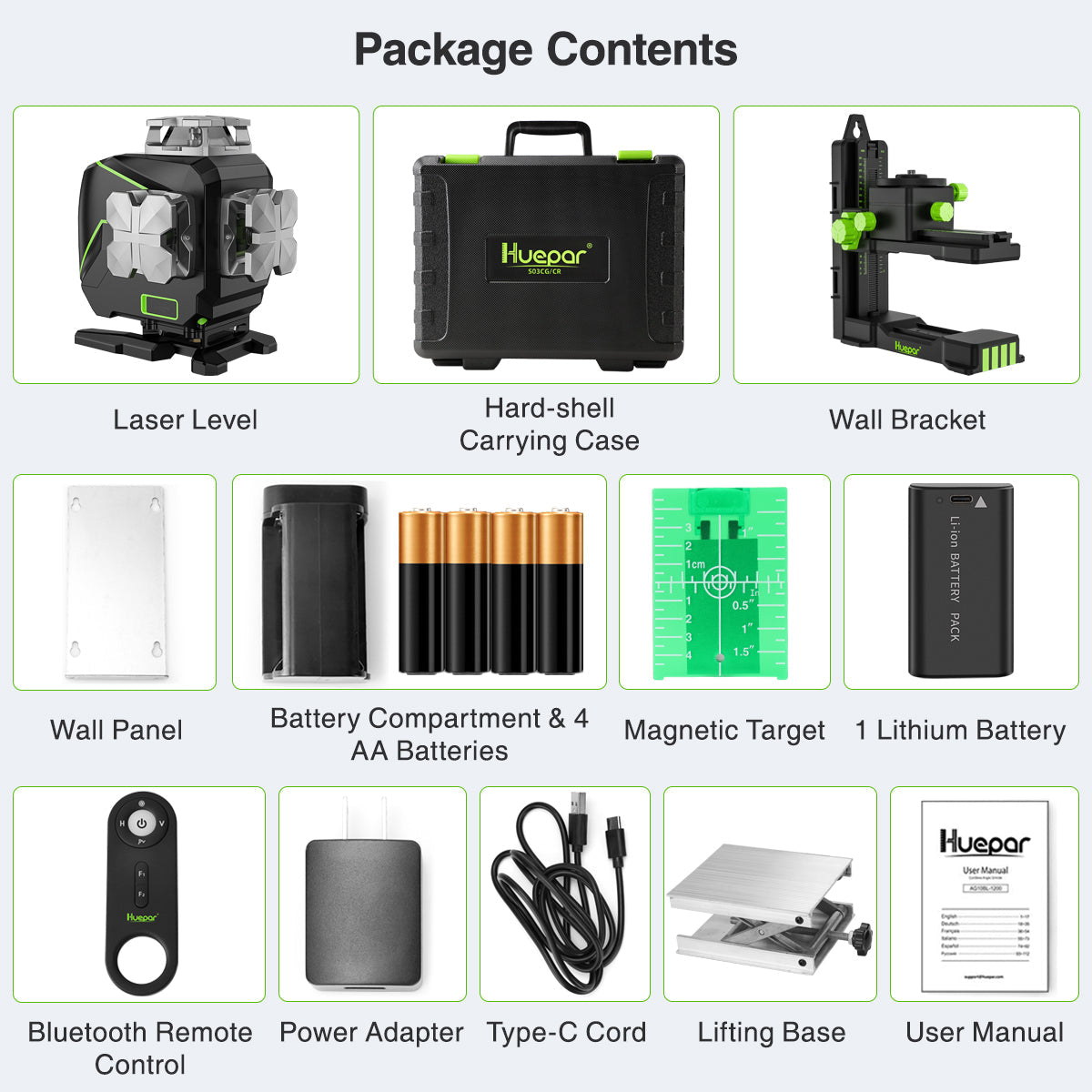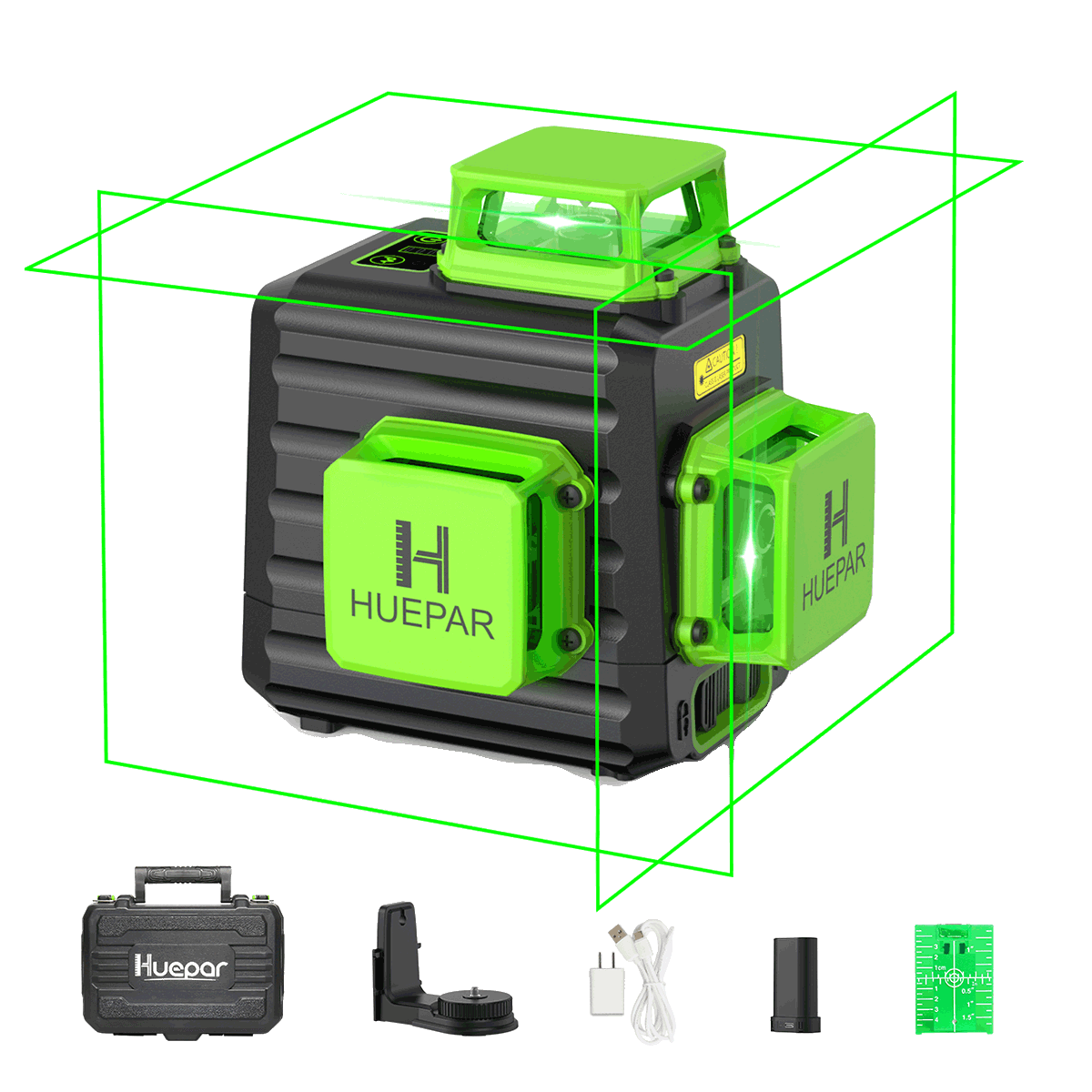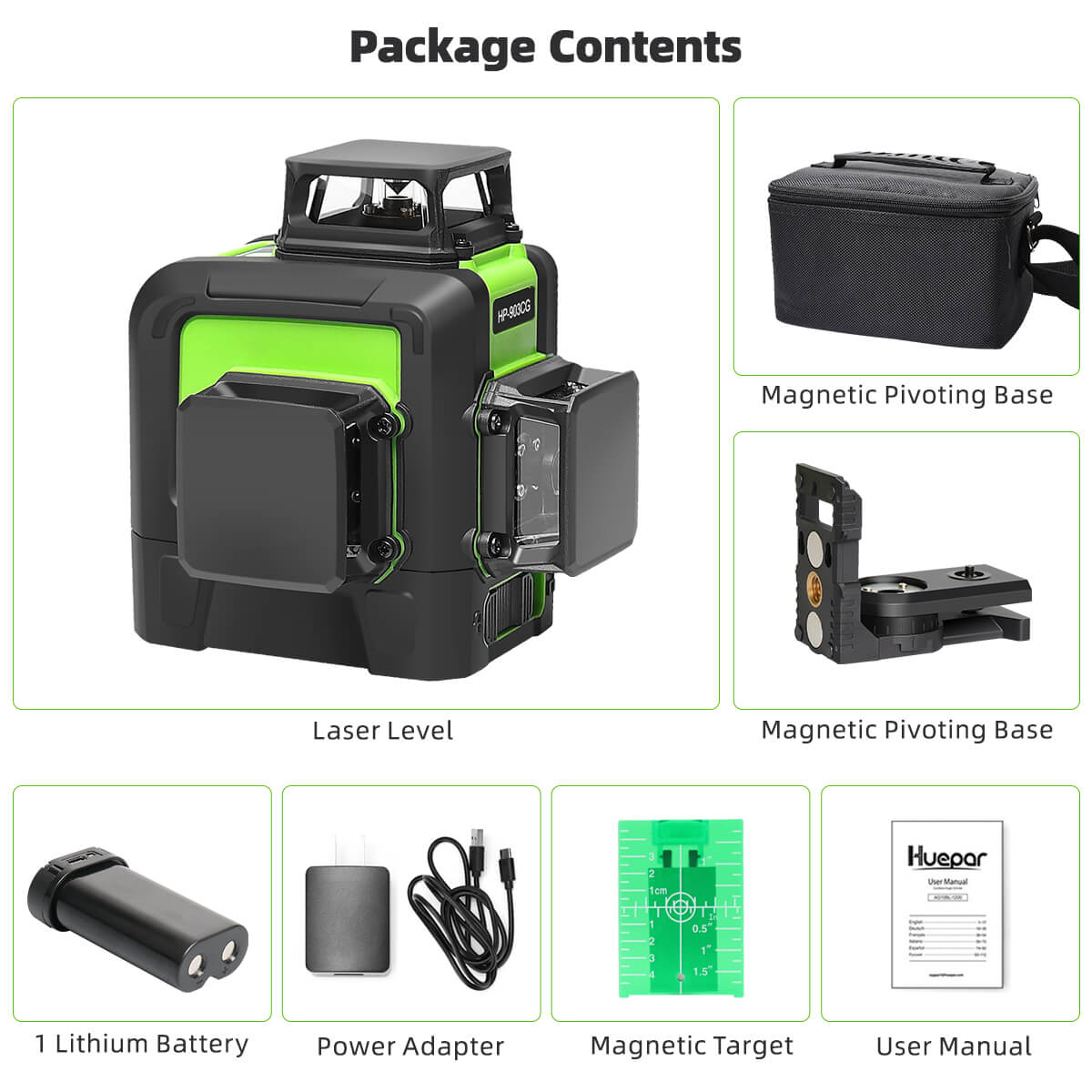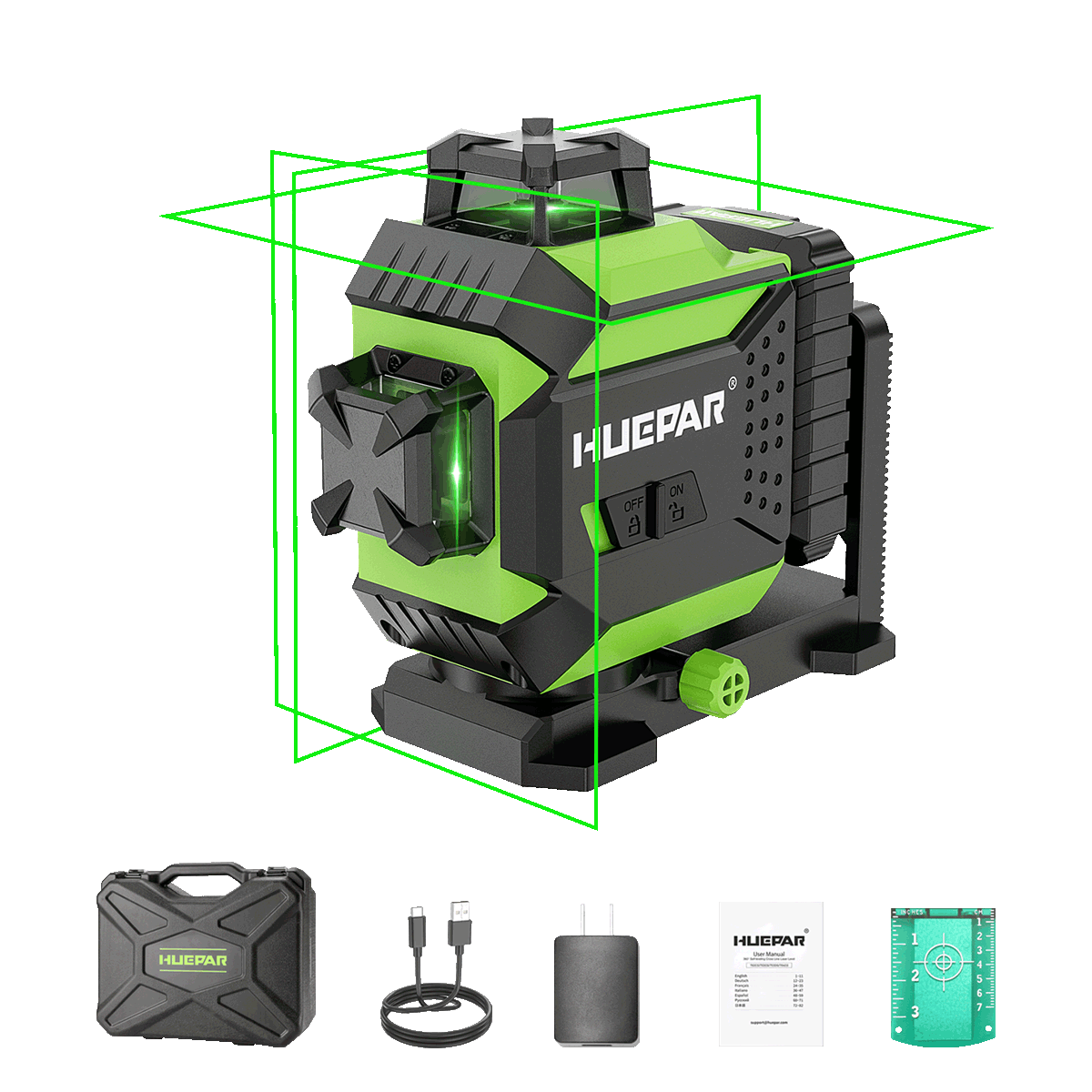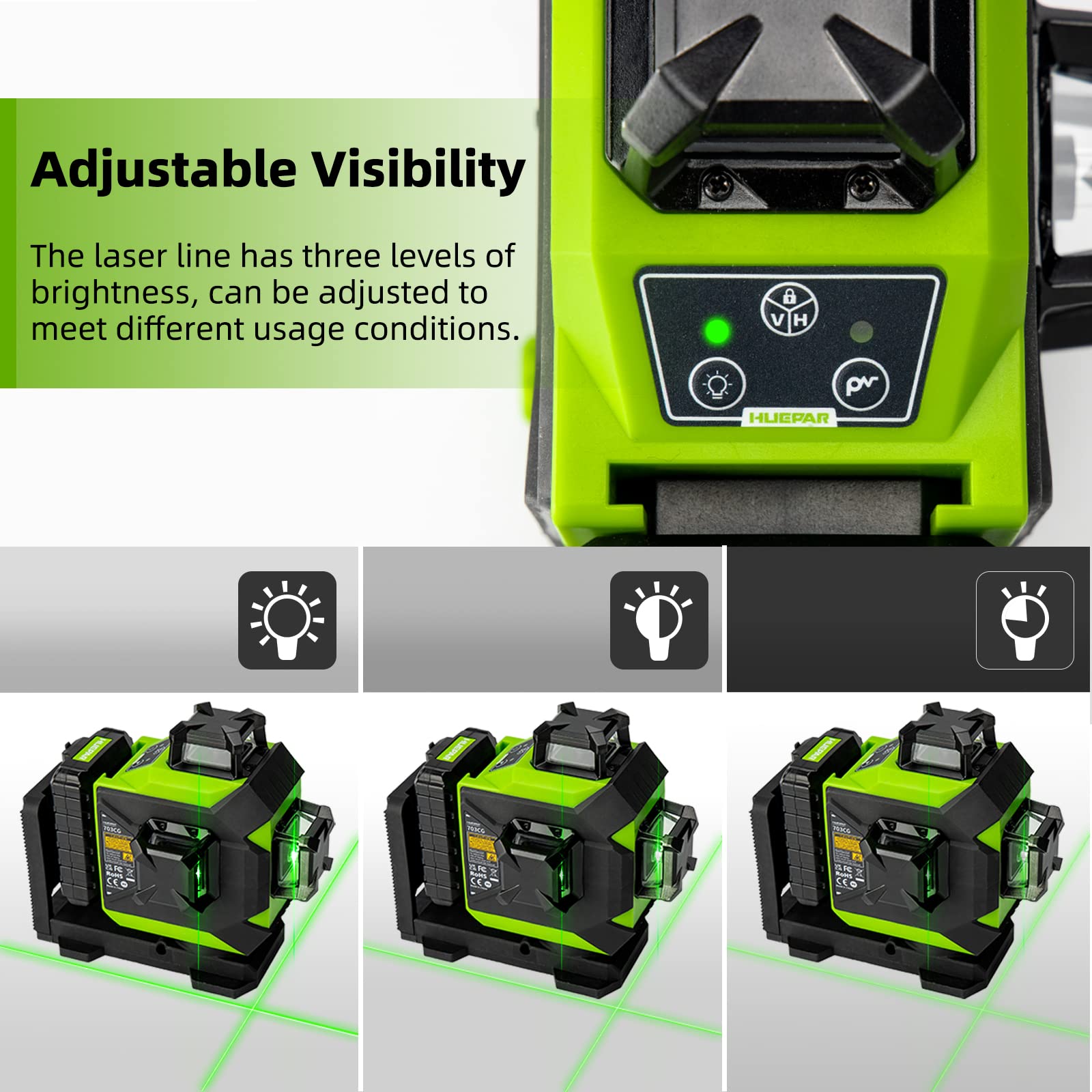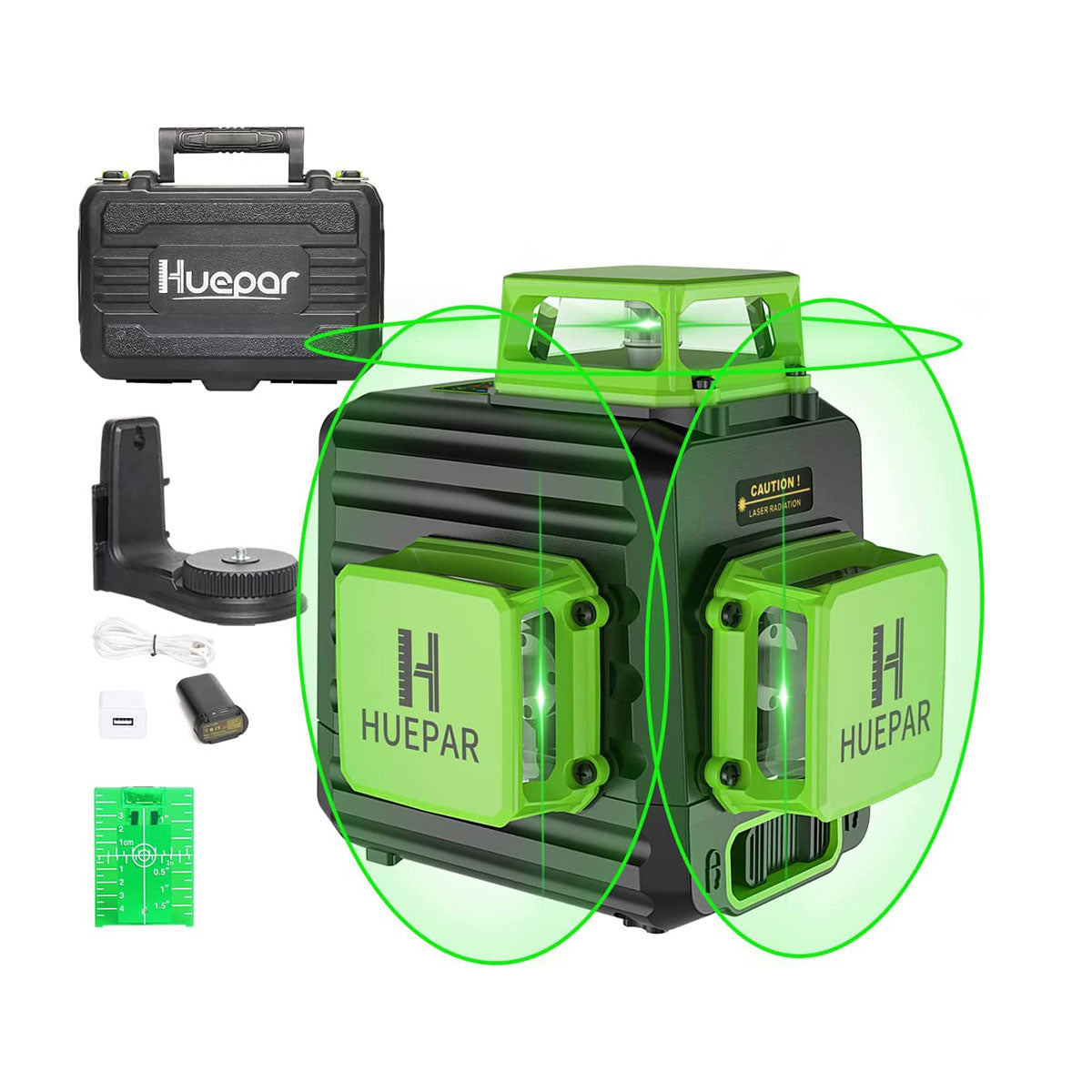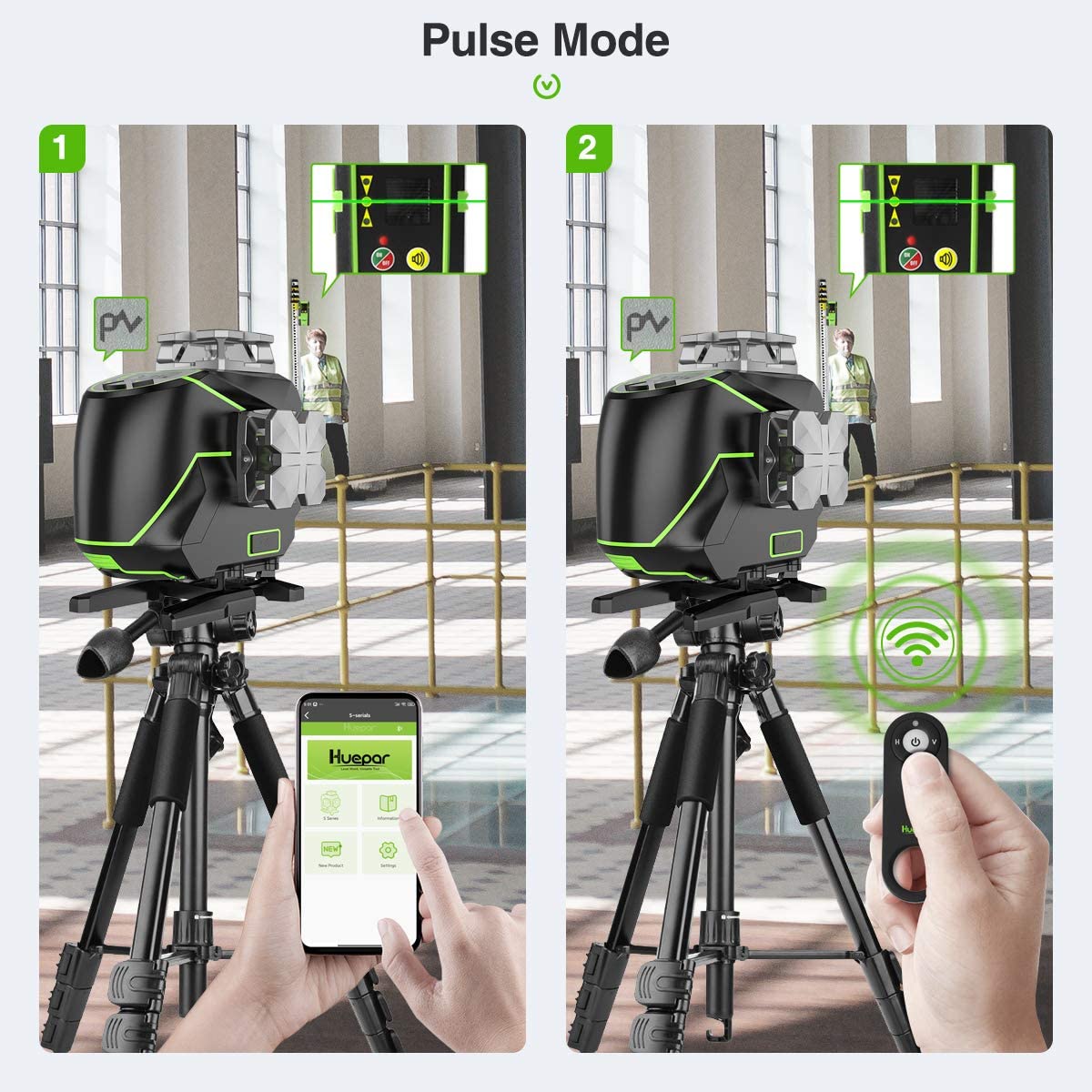
How to Choose the Right Laser Level for Different Jobs?
The laser level is a kind of optical instrument, which is mainly used to measure the height difference of the ground level. A laser level can be divided into green light laser level and red light laser level and LED blue light laser level.
The green light laser level and blue light laser level are suitable for indoor and outdoor use, and the red light laser level is suitable for indoor use. The commonly used laser levels are 2-line, 3-line, and 5-line. Selecting a suitable laser level is related to the integrity of the entire project.
Below, we will introduce several different types of laser levels to tell you how to choose the right laser level for different jobs.
Different Types of Laser Levels
Line Lasers

A line laser level is a device for finding reference points and horizon lines. The 8-line or 12-line laser level is generally a 3D laser level. The 12-line laser level on the market is almost all green light. Its lines form horizontal and vertical surfaces, so it is also called 3 x 360 cross-line three-plane leveling and leveling. Aligning the laser level, where the horizontal line is above the machine, can cover the floor, walls, and ceiling around the room, and the two vertical planes intersect at 90 degrees, allowing the user to quickly visualize and create a square layout.
Therefore, 3D laser levels are ideal for a variety of leveling and layout applications. Often, renovation teams or professional architects buy 3D laser levels. The 16-line laser level also becomes a 4D laser level, allowing users to arrange horizontal, aligned, square, and vertical by generating a 4*360° laser plane (two horizontal lines and two vertical lines).
Spot Lasers

A Spot Laser Level creates a line of dots on a surface. This can be useful in helping you make sure that your drawings and measurements are accurate, such as if you were installing baseboards or hanging cabinets. Spot Lasers allow you to create measurements with greater accuracy. It is a great tool to help you finish your construction project faster and more accurately.
With a laser level, you can make sure that two adjoining walls are plumb and completely vertical before fastening them together. Before, you had to use a tape measure and manually mark each spot where a stud was located to ensure wall stability.
Combination Lasers
The combination laser is a laser level with a plumb point that projects horizontal and vertical laser lines. It offers all-in-one versatility with highly visible lines and dots, application with horizontal leveling, vertical alignment, and plumb point transfer, and connectivity features for easy one-man job setups. It is used for all-around leveling coverage, even on large job sites.
This laser level also projects upper and lower center points on the floor and ceiling. Unique upper and lower plumb points provide additional benefits for ceiling, point transfer, leveling, alignment, plumbing, and squaring applications to suit user needs.
This type of laser level can help you work effectively in home decor, for example, arranging some flower pots in anticipation of new decor projects, home renovation projects, hanging pictures, mirrors, curtain rails, etc.
Rotary Lasers

The rotary laser level creates a 360° laser line by projecting the rotation point, which is used to read out the laser line over long distances. Most rotating lasers also have single-wire generators and vertical-up, vertical-down capabilities. It is ideal for outdoor work like grading roads, laying foundations, or laying pipes, and is the most accurate and expensive laser level available. Manual and self-leveling options are available, and they can be operated via remote control. Rotary laser levels need to be mounted on a platform or stand to operate.
The laser device is installed on the support base so that the laser beam is perpendicular to the axis line of the weight and located above the fixed shell. Due to the action of gravity, the axis of the weight will remain perpendicular to the horizontal plane when it is stationary.
In this way, the laser beam will be emitted by the laser device is kept parallel to the horizontal plane. Turning on the motor to rotate the support base and the laser device, the surrounding wall will form laser scan lines that are parallel to the horizontal plane. Since the laser beam is located above the fixed housing, a 360° continuous scan line can be projected.
Laser Level Accessories
Basic laser level accessories include a tripod, adapter, receiver, and rangefinder. They allow you to easily set the height of the laser level, bringing precisely calibrated laser measurement capabilities, and greater efficiency and accuracy to all your construction or landscaping work.
A tripod can be used in various applications. Huepar Tripod has been regarded as the best in this regard. The Huepar Tripod is a very stable tripod that uses laser leveling technology to make sure you don’t tilt the laser during use. This can be very useful if you need precision and accuracy when using your laser level, and it’s especially useful when working on slanted surfaces or rooftops.
Laser level adapters are laser attachment accessories that attach to your existing laser, giving you the ability to measure slopes and grade manually or when the laser’s self-leveling feature isn’t adequate. If you work with projects that require steep slopes, or if you need a level-only laser to manually accomplish grade, Huepar adapters can give you added functionality.
A laser level receiver is an important tool in any handyman’s arsenal. This device lets you easily pick up the lines generated by construction lasers to ensure that all your measurements are accurate and that your walls, floors, and other pieces of your building project line up perfectly.
A laser rangefinder is a tool for measuring distance. They use invisible beams of light to calculate distances, and some models are even capable of determining distance through objects. Laser rangefinders can help you with your next home improvement project by providing you with accurate measurements before you begin working on a surface or object.

